Agave kavandivi
In 1982, Howard Scott Gentry treated three species in the group Striatae, Agave dasylirioides, Agave striata, and Agave stricta. Previously I have written a bit about Agave striata, Agave stricta, and Agave rzedowskiana, and will tackle another member here. The recently described Agave kavandivi from western Oaxaca brings to nine the number of species in this rapidly expanding cluster of closely related species. I first heard of the possiblity of an undescribed Striatae plant occurring in western Oaxaca back in 2004 and had intended to visit the locality several times, but one thing or another prevented me from getting there until this past February. I was planning a trip to Oaxaca with Daniel Serrano to study Agave titanota at the type locality of Rancho Tambor as well as visiting various spots with populations of plants being called Agave titanota. It so happened that I was able to talk my friend David Yetman and his friend Alberto Burquez into joining us for much of that trip with the stipulation that we visit Santiago Yosondua and the type locality for Agave kavandivi.
In the original description for this species, Abasaí García-Mendoza states that the species was named for Cerro Kava Ndivi, the mountain on which it occurs. He goes on to say that in Mixtec, the name Kava Ndivi is loosely translated to Spanish as “peña de la tórtola” which is further translated to English as “cliff of the turtledove”.
García-Mendoza compares Agave kavandivi to A. dasylirioides, A. stricta, and A. rzedowskiana, and after having seen three of the four (I’m missing A. dasylirioides) I can say that A. stricta and A. rzedowskiana are easily distinguished from A. kavandivi mostly by the leaf width. Those on A. kavandivi are noticeably wider than those on the other two. Agave rzedowskiana and A. stricta also have nearly twice as many leaves as A. kavandivi. Meanwhile, Agave dasylirioides has leaves even wider than those of A. kavandivi while also having slightly more leaves per rosette. The main difference is that Agave dasylirioides is solitary while A. kavandivi is offsetting. Having said that, we did see a number of plants that had not yet begun to offset, so that will not always be an easy-to-use method.
Be sure to check the store, as we do have Agave kavandivi available for sale in 3-inch pots
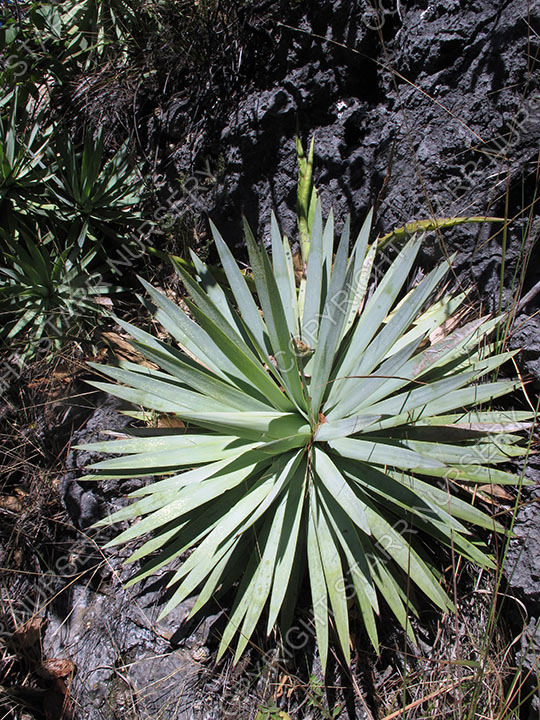
A perfect sphere of leaves.
Our visit to Santiago Yosondua and the nearby Cerro Kava Ndivi was in mid-February, and it certainly was quite warm, bordering on hot. Sunscreen, a long sleeve shirt and a good field hat with a wide brim were some of the basic necessities for climbing around the Cerro.

A hillside full of interesting plants.
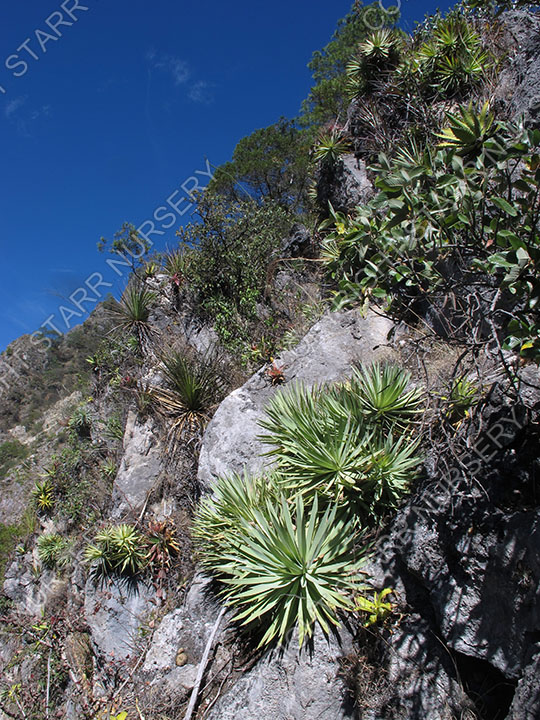
These Agave kavandivi love growing in rocks and hard to get to spots.
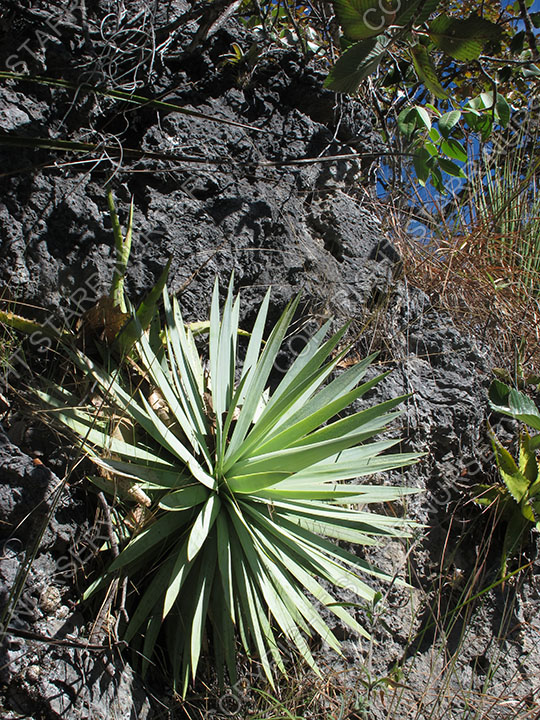
Another outstanding specimen of Agave kavandivi

This Agave kavandivi plant is hanging on for dear life.
The Agave is not the only intriguing plant that occurs on Cerro Kava Ndivi. Below, we see a couple of shots of a Hechtia species.


Next we spot a Brahea species growing on a huge boulder.
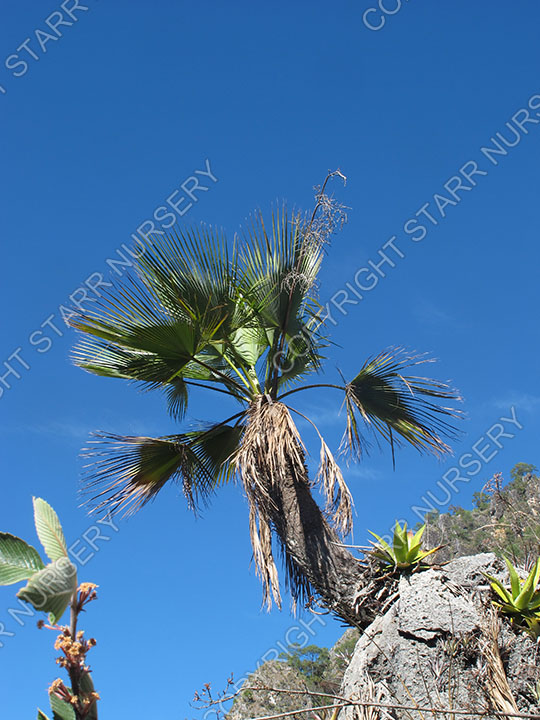
Last, but not least we spot an unrecognized Ferocactus species, and with no books to help us out, we decide it is undescribed. That is until we get back to the U.S. and post a picture only to have several people chime in with Ferocactus alamosanus subspecies reppenhagenii. Oh well, so much for the chance to describe a new species of Ferocactus.
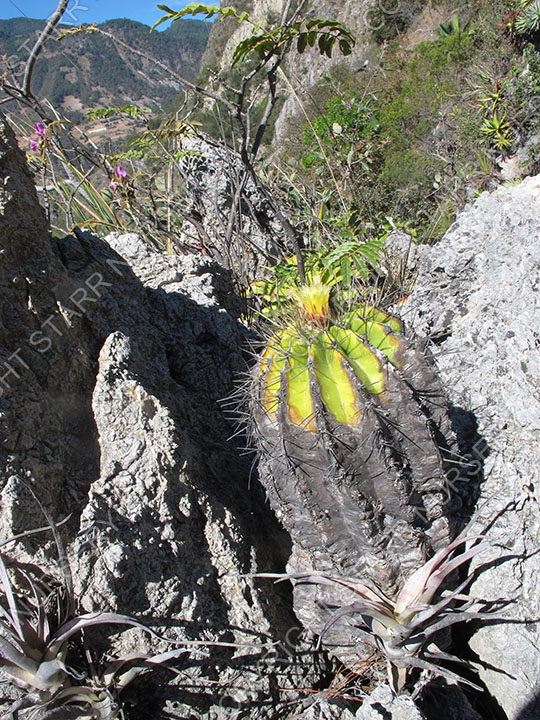
Posted in: Uncategorized
Leave a Comment (5) ↓
such beautifdul plants!
Great place and beautiful plants! Agave kavandivi looks very similar to Agave dasylirioides that occur South of Mexico City in Puebla.
What might be the other agave that grows there?
Unfortunately there is no photo with details of it shown.
I agree they are beautiful.
The other agave found there is frequently called Agave horrida, but that is far out of the range for that species.
Hi Greg,
you are fully right with your comments on this group of agaves, especially that Agave dasylirioides is missing, when these agaves were compared. Exactely the same I thought, when I was reading the new description for the first time.
Have you ever seen the flower of these both agaves (kavandivii and dasylirioides)?
Here in my collection a species that might belong to A. kavandivi is just now flowering. I got it many years ago at the end of the eightees, when I studied.
The plant is grown from a bulbil and flowering after 14 years cultivated in a pot.
The motherplant had never suckers, but didn’ t die after it had a flower and that single bulbil. It became a bigger group with several heads, but didn’ t flower again up today.
Could you provide a photo of that other agave (horrida?) that grows at the same place?
Miguel